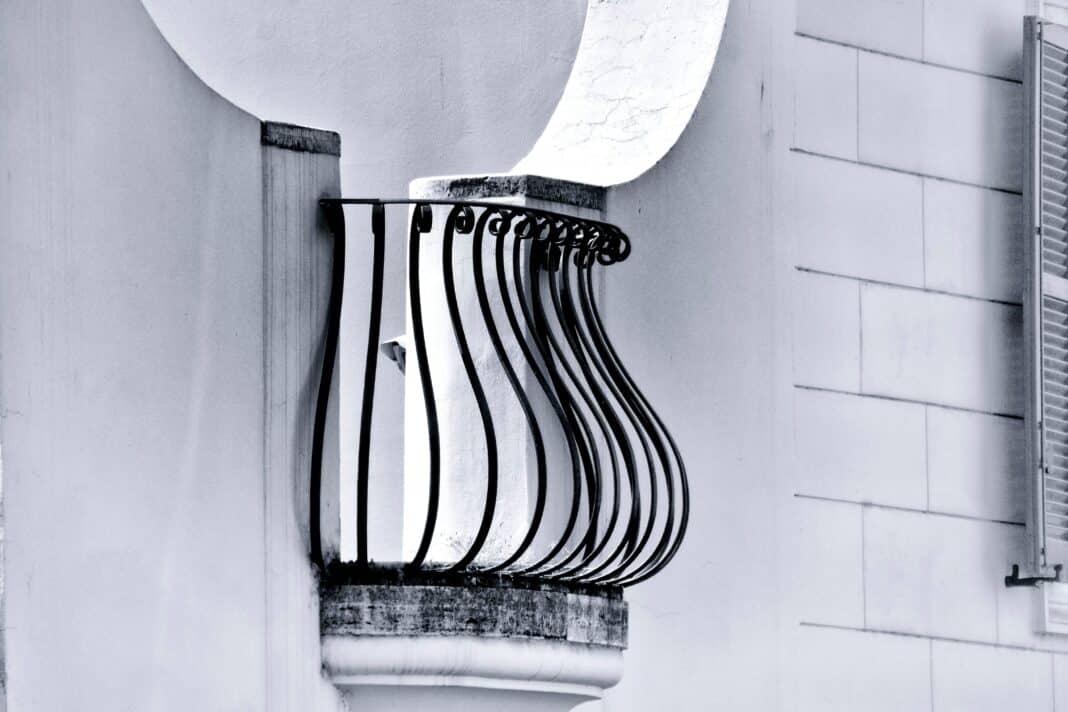Often found in countries such as Spain and Italy, Juliet balconies add an element of European charm to building facades everywhere – especially in the UK, where they’re becoming a common feature.
Named for the balcony scene with Romeo in Shakespeare’s famous play, a Juliet balcony fixes a balustrade across an upper floor full-height window or door, allowing people to enjoy the view and fresh air without having to install a platform projecting from the external wall.
Being cost-effective and easy to install, it’s no wonder that these ‘false’ balconies are now a popular choice for many property owners – but which Juliet balcony style is the best for you?
Here is a quick guide to the different Juliet balcony design options out there to help you choose.
Juliet balcony materials
There are various styles of Juliet balcony available, from decorative to minimalist, depending on the materials used. For example, more traditional balconies feature wrought iron railings with scrollwork, which are typically painted black for an elegant ornamental look.
However, modern versions of the Juliet balcony create a more streamlined appearance with vertical steel railings that are more resistant to weather exposure – though they can also be powder-coated in different paint colours if desired.
For many contemporary homes, gaps in railings aren’t ideal – posing a particular risk to children and pets. That’s why solid barriers made from panels of highly durable toughened glass or laminated glass are ideal for safe yet trendy Juliet balconies.
Juliet balcony fixing methods
The fixings used for a Juliet balcony depend on the materials used, the design, and the most appropriate method for securing it to the building to ensure safety, in regard to the particular materials and design chosen.
For example, when it comes to glass, whether the balcony can be frameless or not and whether it requires a handrail on top or not will depend on the type of glass and its dimensions. In the UK, building regulations determine when certain types of glass and handrails must be used to protect against falls from a height.
There are several ways to mount a Juliet balcony balustrade, with the most common being vertical posts at either side and/or horizontal posts along the top and bottom, though discreet stand-off fixings can be used to attach the panel directly to the fascia.
Similarly, traditional styles featuring railings as part of a whole frame can be anchored directly into the masonry surrounding the window or door.
Juliet balcony doors
Though they’re not part of the balcony barrier itself, the window or door behind the guarding also plays an important role in the function and appearance of a Juliet balcony.
Inward-opening French doors are one of the most frequently seen choices, providing a classic style with framed panes of glass. However, they require leaving enough open space inside to allow the doors to open inwards when you want to use the balconette.
For this reason, sliding doors are sometimes preferred. Not only do they allow you to open and close the door without requiring much clearance inside or out, but their simple window-like design also makes the space feel more open and therefore larger than it really is.
Bi-fold doors are another alternative, as they slide open and fold out of the way like an accordion, but they do require a bigger footprint than standard sliding doors.
In some cases, as there is no platform to step out onto, a full-height window will do in place of doors to access the balcony. Vertical sash windows can suffice as long as they can be secured in the open position safely – or you may want to invest in more expensive yet convenient tilt-and-turn windows, which can open from any hinged side, including top or bottom.
Which Juliet balcony should you choose?
Choosing the best Juliet balcony design for your home or business property may seem difficult at first, but once you consider factors such as the view, the amount of natural light you expect, and your budget, it should be easier to come to a decision.
Whichever materials, mounting method, and window or door holds the most appeal, it’s important to order parts and fittings from reliable suppliers, and only go ahead with an installation after consulting with a professional engineer.
They should be able to advise you on the most suitable design for your chosen location, assist with any planning permission applications, and provide calculations to ensure your Juliet balcony installation is completely safe and compliant with regulations.





